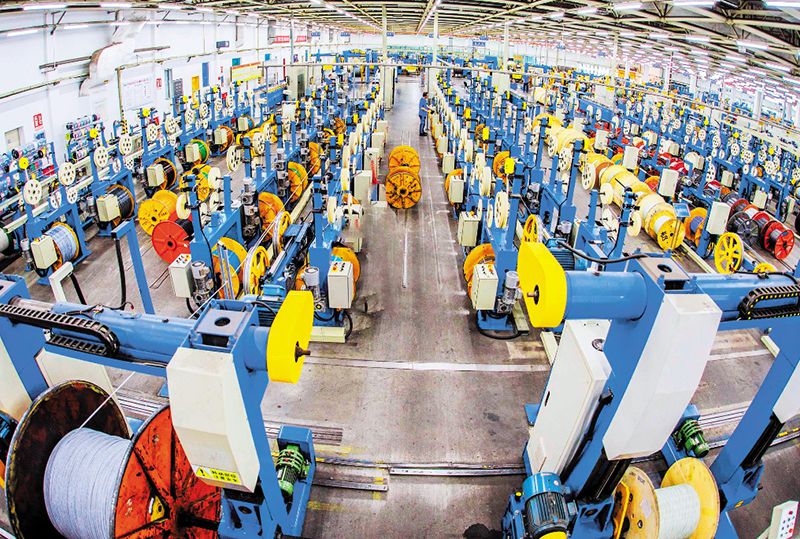The manufacturing process of fiber-optic cables typically involves several key steps, including fiber drawing, buffering, cable assembly, and testing.
The first step in the process is fiber drawing, which involves heating a preform made of silica glass until it melts and then pulling it into a thin fiber using specialized machinery. This results in an extremely thin fiber, often just a few microns in diameter.
Once the fibers have been created, they are typically coated with a protective layer through a process called buffering. This involves applying a polymer coating to the surface of the fiber, which provides both protection and flexibility.
After buffering, the fibers are assembled into a cable by wrapping them with additional layers of protective materials, such as aramid yarn for strength, water-blocking gel to prevent moisture ingress, and an outer jacket made of durable plastic material. The exact composition of these layers can vary depending on the specific application of the cable.

Once the cable has been assembled, it undergoes a series of tests to ensure that it meets industry standards for performance and quality. These tests typically include measures of attenuation, bandwidth, and mechanical properties such as tensile strength and bending radius.
Maintaining the quality and consistency of the glass fibers is a critical aspect of the production process, as even minor variations in their diameter or composition can impact the performance of the cable. To address this issue, manufacturers use specialized measurement tools such as optical time-domain reflectometers (OTDRs) to monitor the quality of each fiber throughout the production process.
In recent years, researchers have explored new materials and manufacturing techniques for fiber-optic cables, such as the use of carbon nanotubes as a replacement for traditional glass fibers or 3D printing to create custom cables with specific geometries and properties.
Overall, the manufacturing process of fiber-optic cables is complex. As a production and manufacturing factory for optical cables, SukCable also has rich experience in the production, sales, and construction of optical cables.



